
The Regulation of Cuticle Biosynthesis
Plant Physiology, Plant Physiology: On The InsideThe outer surface of the aerial parts of land plants is covered by the cuticle, a waxy layer that provides a barrier against damage caused by environmental factors as well as protection against non-stomatal water loss. Castorina et al. (10.1104/pp.20.00322) now show that both cuticle deposition and…
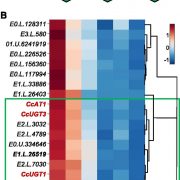
Biosynthesis of Montbretin, an Anti-Diabetes Drug
Plant Physiology, Plant Physiology: On The InsideDiabetes and obesity are major health challenges. Diabetes alone affects over 422 million people worldwide and is among the top ten leading causes of death. Type-2 diabetes (T2D) is characterized by the body’s inefficient use of insulin, which leads to elevated blood Glc levels with detrimental effects…

Villin and GLABRA2 Regulate Root Hair Growth
Plant Physiology, Plant Physiology: On The InsideThe enhanced elongation of root hairs in response to mild water deficiency permits more effective water and nutrition uptake. The growth of root hairs is regulated in part by actin dynamics. Thick actin-filament bundles (“thick bundles”) in the apical and subapical area of root hairs, for example,…
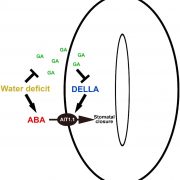
A Novel Form of Crosstalk Between Gibberellic Acid and Abscisic Acid
Plant Physiology, Plant Physiology: On The InsideThe negative interaction between gibberellic acid (GA) and the stress hormone abscisic acid (ABA) has been studied for many years in numerous plant species. These studies suggest that GA and ABA negatively affect each other’s biosynthesis and signaling. The nuclear DELLA proteins suppress almost all…
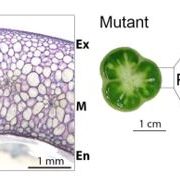
Tempting Fate: A Guanylate-Binding Protein Maintains Tomato Fruit Cell Differentiation
Blog, Research, The Plant Cell, The Plant Cell: In BriefTissues are composed of specialized cell types. As a cell matures, it acquires the characteristics associated with a specific identity, or fate. This process is called cell differentiation and is crucial for proper organ development. However, after a differentiation program is initiated, the mechanisms…
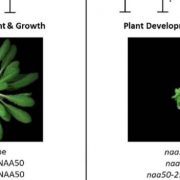
The Meaning of an End: N-terminal Acetyltransferase NAA50 Controls Plant Growth and Stress Responses
Blog, Plant Physiology, Plant Physiology: News and Views, ResearchAuthor: Sjon Hartman
ORCID: 0000-0002-6709-6436
Plant Ecophysiology, Institute of Environmental Biology, Utrecht University, Padualaan 8, 3584 CH, Utrecht, The Netherlands
At least 80% of eukaryotic proteins are estimated to undergo N-terminal acetylation (NTA), making it likely that your…
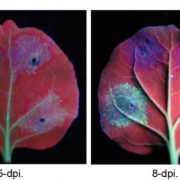
A Geminivirus Exploits the Host Machinery to Inhibit Methylation-mediated Defense Responses
Blog, Research, The Plant Cell, The Plant Cell: In a NutshellChen et al. uncover a strategy used by a DNA geminivirus to exploit the host machinery in order to inhibit methylation-mediated defense responses when establishing infection. The Plant Cell (2020) https://doi.org/10.1105/tpc.20.00249.
Background: Geminiviruses belong to one of the largest and most…
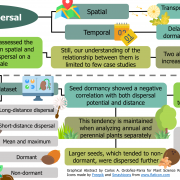
Review: Trade‐off between seed dispersal in space and time (Ecol. Lett.)
Plant Science Research Weekly
Seeds can be dispersed in space (i.e., away from their mother plants) or time (i.e., delayed germination via seed dormancy or persistent soil seed banks). These contrasting strategies have traditionally been considered to increase reproductive success, but our understanding of their relationship is…

Review: Plant–microbiome interactions: from community assembly to plant health (Nat. Rev. Microbiol)
Plant Science Research Weekly
The association of plants with communities of beneficial microbes, called plant microbiota, has a positive effect on growth and proliferation of both organisms. Recent findings in plant microbiota research uncovered the role of individual microbes and associated genes during plant-microbe interaction…

